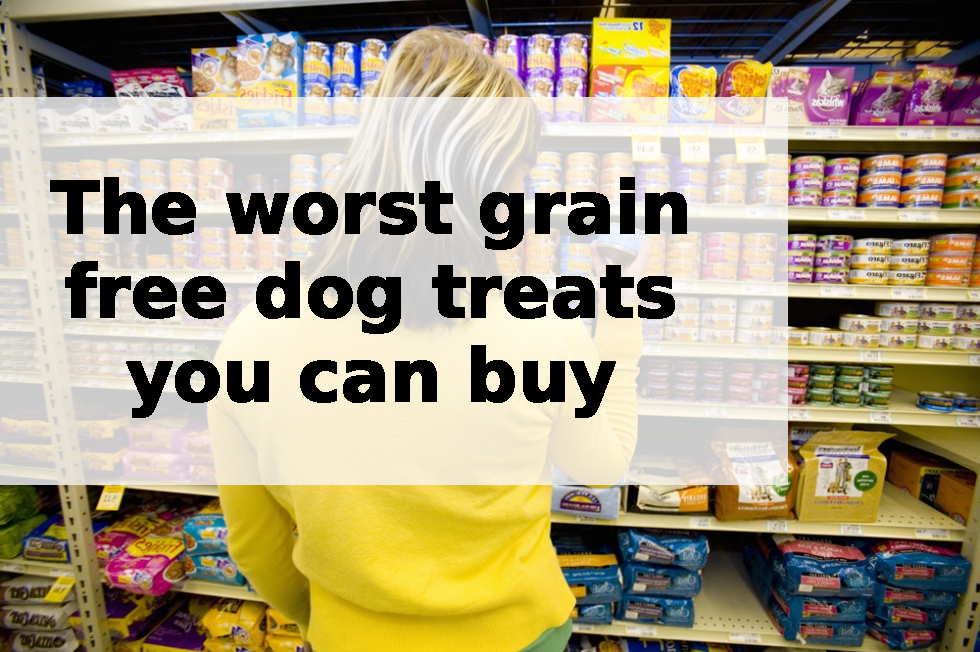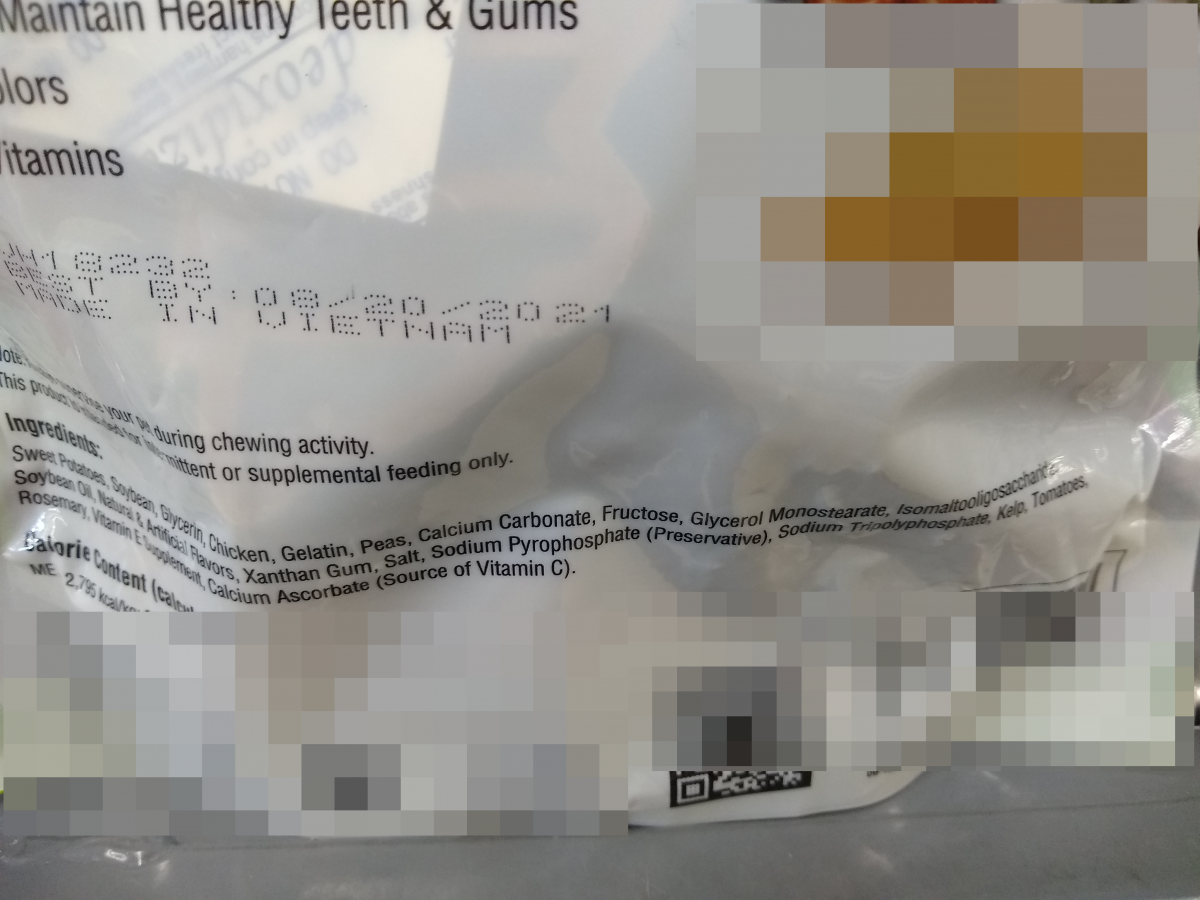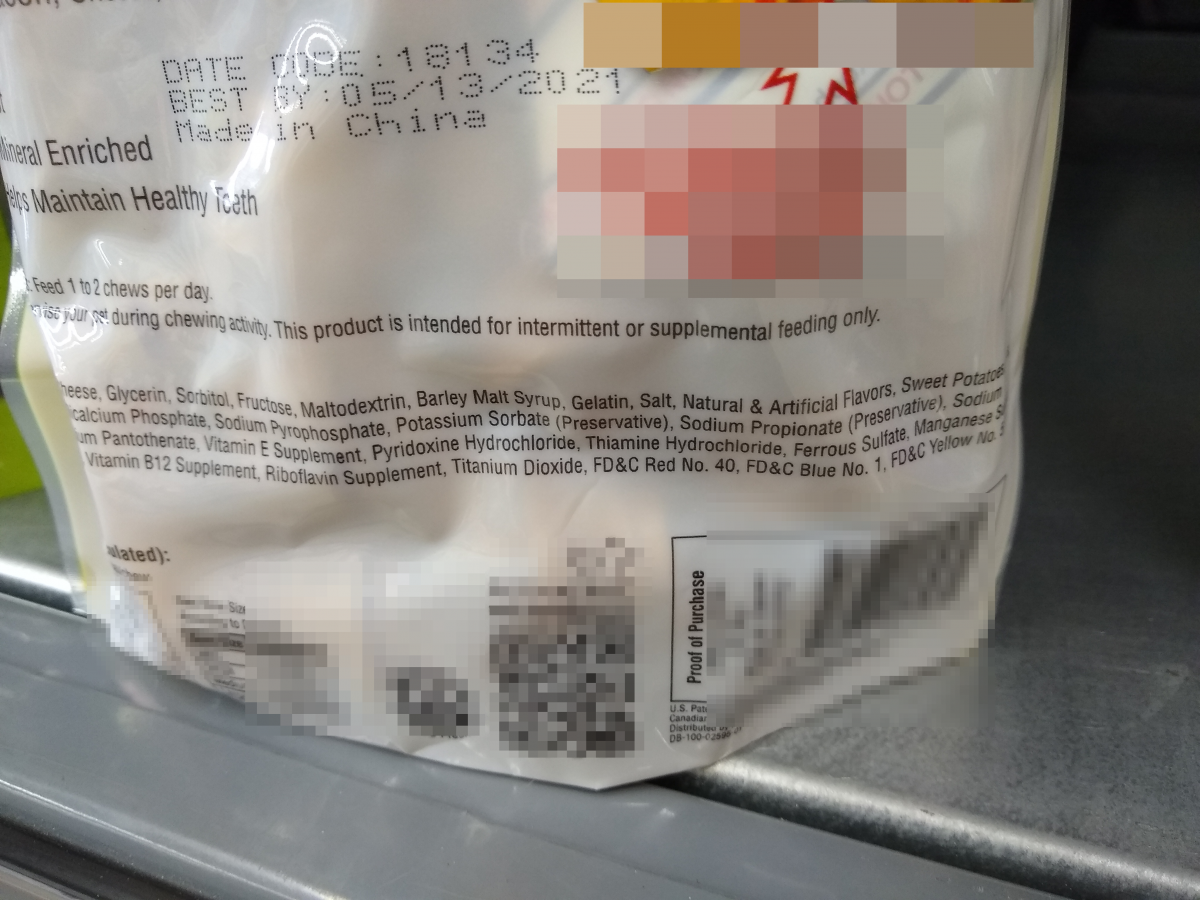
I usually go to the store to get food for my dog and I would pick up some treats as well. To make it simple and fast I would look for grain free dog treats find couple different bags and take it home, not even look what is made of as long as is grain free. I would feed my dog with these treats, and later on could notice different behavior patterns. My dog would get quite and lose motivation to play. I started to write everything I feed my dog, and over time the only thing would change is grain free treats. I realized every time I feed my dog with a certain grain free dog treats that behavior patterns come back.
Since I learned how to read labels, I was super excited to see and compare as many labels as possible. Quickly I learned that lot of companies not disclosing full nutrition facts of their products as they refer to their website or to call them to find out the full list of ingredients. Grain free dog treats are one of the healthiest you can get, and they promote them like that. Dog food companies use marketing terms to attract buyers and sell their brand as the best.
Dog food companies use marketing terms to get our attention and sell their product to us. In the process of making dog food, dog food companies realized they can substitute meat content with something they call or look like meat.
Grain free dog treats draw lot of attention from us as dog owners. You probably know already as dog owner, dogs are carnivores and meat-based treats are the best. You most likely expect to get what you are buying, most of the time that is just what you think. What you buy is compliantly different what you actually end up getting it. Dog food companies found a way around this to make these grain free dog treats worst quality you can even imagine.
Dog food companies only need to comply to a couple officials that control entire dog food industry to get grain free dog treats on the shelf. Associations such as “National Research Council” (NRC) of the Academy of Sciences (until the late 1980) and “Association of American Feed Control Officials “(AAFCO).
These associations only insure that the formula they put out to at least meets minimal nutritional requirements. With only established so called “minimal nutritional requirements” manufactures have lots of room to manipulate the whole industry.
I want to share with you few major ingredients they use and how they advertise it so you’ll be able to tell the difference before you buy it and feed your dog with that toxic so called “all meat dog treats”.
Grain free dog treats contain mostly meat and fat. You might find some other ingredients such as grain substitute, additives, synthetic vitamins and mineralsand these ones are just to enhance smell, taste and texture. Grain free dog treats with these ingredients turns out to be more toxic and do more harm to your dog than others.
Toxic ingredients to avoid:
Meat byproducts
The Meat is first on the list and you should find it first on the list of ingredients also. If you don’t see meat first you should avoid it. Meat should be identified by species such as “beef”, “pork”, “chicken”, “turkey”, “lamb”and “fish”. If you don’t see it, quality is questionable.
Grain free dog treats that contain broad terms such as “meat”, “animal”,”poultry”, or “fish” are just company ways to cover up meat sources and origin. Meats sourced from questionable origins are presented with a generic term such as “globally sourced ingredients”.
Animal meal
Meat by products such as “animal meal”, “poultry meal”, “bone meal”, “rich hulls”, “blood meal”, “meat meal”or “fish meal” are even worse because contain parts of an animal that are not digestible, and typically contain the least desirable parts of the protein source that you may not even consider to be meat.
Fats and oil
Fat is essential for any meat product, especially grain free dog treats. Treats made of low quality ingredients that I mention above have fats added because fats are removed at first place. When fats are removed from meat fats oxidize fast and turn into toxic byproduct. Fats also act as a binding agent and flavor enhancers. Fats sourced from questionable origins are presented with a generic term such as “globally sourced ingredients”.
If you see that they have listed fats that are not related to the meat species used in certain grain free dog
treats is a very bad sign and I would avoid such a product.
Animal fat
Animal fat comes from beef, pork, chicken, turkey and lamb. Most of the time you will see “Animal fat” as one of the ingredients. With this generic term the source and origin is questionable.
Fish oil (salmon oil or herring oil)
Fish that dog food companies use to extract oils has questionable quality and origin, and used generic term such as “globally sourced ingredients”. Once fish oils are extracted it start to oxidize and break down into toxic compounds. Fish oil is added to enhance nutritional value. You might heard before that fish oil is good for your dog and you end up buying treats that contain fish oils. Fish oils are healthy only in their natural form, any separation or process to extract fish oils is generally bad practice. Avoid any grain free dog treats with added fish oil and fish oil substitute.

Vegetable oil
You might think that vegetable oils are one of the healthiest for your dog, thanks to dog food company’s vegetable oils are one of the worst ingredients you can find in grain free dog treats. How is that possible you might ask? Well, here is how. Vegetables that are used to extract oils are genetically modified and these oils are recycled multiple times, that is right recycled multiple times.
Besides the generic term such as “Vegetable oil” cottonseed, soybean, sunflower oil are also questionable and dangerous. Vegetable oils in grain free dog treats has no nutritional value, and is only added for texture or to enhance the flavor/smell.
Carbohydrates
Grain free dog treats contain some sort of carbohydrates, since manufactures don’t use grain they use a substitute. To get attractive texture they use other ingredients such as pea products, pea starch, pea flour, pea protein concentrate. Pea products are similar to soybeans and soybean meals, genetically modified and since pea products contains high level of protein that also indicate that meat or meat meals are low quality and contains not enough protein.
Another “starch substitute” manufactures use often is tapioca, and has no nutritional value.
Synthetic vitamins and minerals
Synthetic vitamins and minerals in grain free dog treats are added to enhance nutritional value that is already low from using low quality meats and fat. Most vitamins and minerals are manufactured in China and India, where food safety is questionable. Most vitamins and minerals are manufactured from waste and recycled products. Manufactures get very creative with this process, there is so much of them that you can not even imagine. I have managed through my research to make a list of the most common.
| vitamins | Minerals |
| Retinyl Palmitate Sodium Bisulfate Thiamine Hydrochloride Choline Bitartrate Menadione Sodium Bisulfate Retinyl Acetate Thiamine Monohydrate Dl-Alpha Tocopherol Pyridoxine Hydrochloride Nicotinic Acid Thiamine Mononitrate Pantothenic Acid Ascorbic Acid Choline Chloride |
Ferrous Sulphate Magnesium Copper Cobalt Carbonate Chloride Dicalcium Phosphate Potassium Iodine Cobalt Amino Acid Chelate Proteinate Tricalcium Phosphate Sodium Sulphur Copper Amino Acid Chelate Manganese Sodium Selenite Zinc Iron Potassium Iodide |

Additives
List of additives you can find in grain free dog treats is endless. Additives provide no nutritional value, and only reason toxic chemicals are added to enhance the taste/smell and keep texture good looking.
Manufactures use generic term “Generally Recognized as Safe” (GRAS) for all of these toxic chemicals. I found most common and most toxic to give you an idea.
Propylene Glycol
Antifreeze is made of this. I found some information that is used to preserve the moisture.
Carrageenan
Many bad studies have linked to this toxic substance. Most of the time is used as food thickener.
Ethoxyquin, Butylated hydroxyanisole (BHA) and Butylated hydroxytoluene (BHT)
These additives also known as pesticides, are banned as a direct food additive for people consummation.
TBHQ comes from butane. Lab studies show is safe in small doses for short period of time. Since you can find TBHQ in higher doses across all kinds of dog treats, is better to take precautionary steps and stay away from it.
Tetra Sodium Pyrophosphate
Tetrasodium pyrophosphate is used in household detergents to remove calcium deposits.
Food dyes
These are controversial toxic substance that many studies have shown to cause behavior in people and dogs. Food dyes have no nutritional value and the only reason you will find in grain free dog treats is to make it more attractive to you as a dog owner. You have probably seen it all, these are the most common. Titanium Dioxide, Red #40, Red #3, Blue #1, Blue #2, Yellow #5, Yellow #6.
There is a lot more to talk about this topic alone, one important thing to know is how all these byproducts are made. In the spirit of keeping this short as possible and straight to the point I will talk about it another time.
So far I have given you all bad things to avoid in grain free dog treats, because I know by now you have a better idea what to avoid or at least not to feed your dog with these toxic substances for extensive period of time.
Writing this article I have completely lost the feel for things that are good about grain free dog treats. Don’t get this article wrong, there are many good things about grain free dog treats. I have saved good things for the end, and I would like to share with you what to look for when you picking up healthy grain free dog treats.
Quick tip on how to pick a healthy grain free dog treats
First and most important is meat, quality and origin. The best is when meat coming from one animal and from one prime location. There are many good animals that meat could come from such as Beef, Bison, Lamb, Pork, Chicken, Turkey, Duck, Goat, Ostrich, Rabbit, Elk, Smelt, Venison, Kangaroo, Pheasant, Salmon, Trout, Menhaden Fish, Quail, Mackerel, Sardines, Whitefish.
Depends on your area you will have one animal more than another, doesn’t mean you need to look for another that is hard to get in your area. What is your area known for in term of animal farms that would be the best and the safest way to go. I have found the best you can buy is from dog food companies that have smaller production and care more about quality over quantity.
Another kind of meat that is taking a healthy spin in the world of grain free dog treats are animal organs such as Heart, Kidney, Liver, Spleen, Lung. Organs are loaded with vitamins and minerals and very healthy for your dog. I haven’t seen a dog that doesn’t like it. I’m sure if you give it to your dog, it might become a favorite food. “Small production” dog food companies.
Dog food companies always try to improve the marketing angle in order to sell more dog treats. Often times you will see generic terms such as “super-premium,” “natural,” and “organic” that will get your attention, and you shouldn’t trust them. I can say there is lots of “smaller production” dog food companies that deliver what they promise.
Takeaway in this article is always better to take a second and go through ingredients to make sure you don’t get the worst of all.
This article is what I learned during this extensive research I have done it, simply out of the curiosity and passion to learn more about it. I’m not the veterinarian or dog nutritionist and you should not take this as medical advice. My opinion and understanding are formed from the facts and studies that have been done over a certain period of time. Always consult with your veterinarian before you make big changes in yours dog diet.
Today almost every Internet user uses YT or any other service to upload and watch videos, make some videos.
Thanks!
i just got two puppies, keep looking at labels.
my dog is so picky, i got better views now. GOD BLESS!
keep feeding your dog with natural food.
Thanks
great info!
Hi, I’ve been visiting your website a few times and decided to give you some positive feedback because I find it very useful. Well done.
Thank you for help and I wish you a great week!
I blog quite often and I truly thank you for your content. This great article has truly peaked my interest. I will take a note of your site and keep checking for new information about once a week.
I was pretty pleased to find this great site. I want to to thank you for your time just for this fantastic read!!
I definitely enjoyed every little bit of it and i also have
you book-marked to see new stuff on your site.
That is a very good tip particularly to those
fresh to the blogosphere. Short but very accurate info… Thanks
for sharing this one.